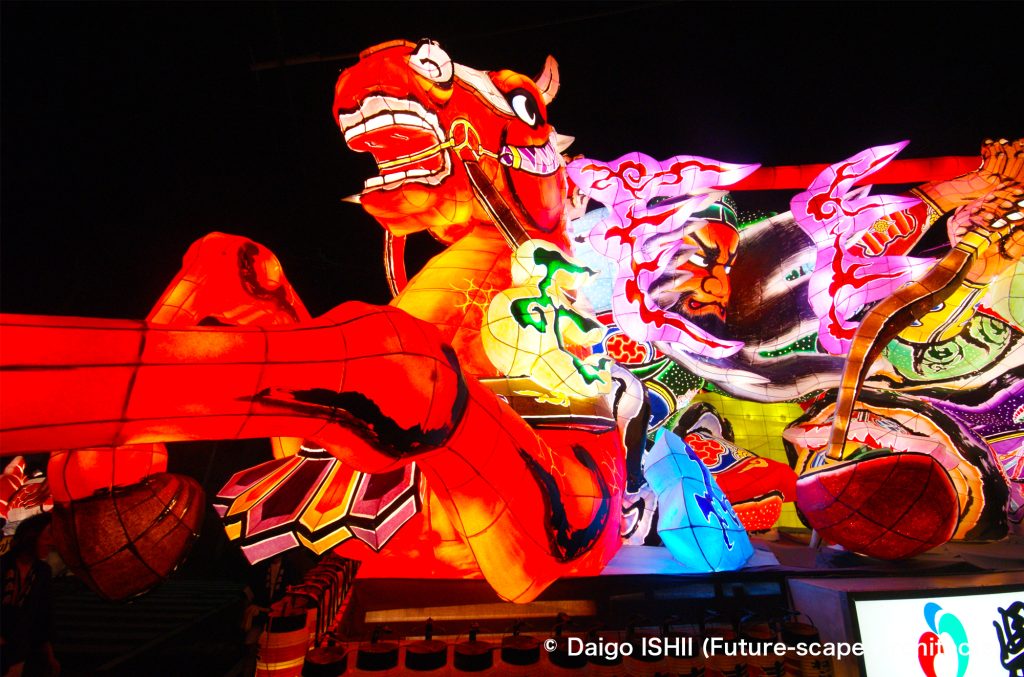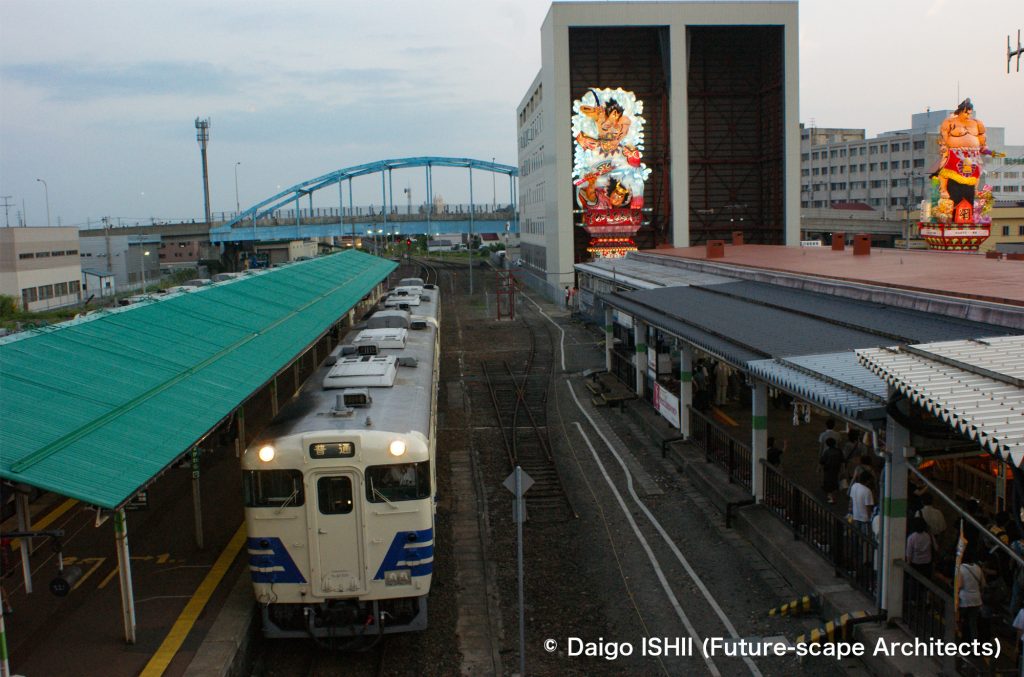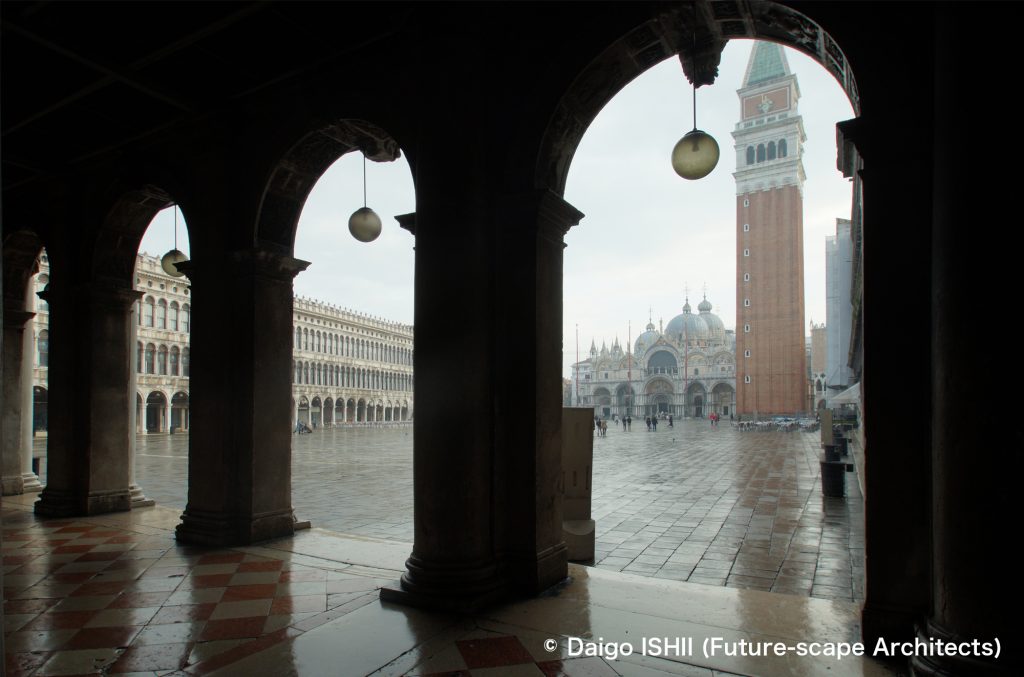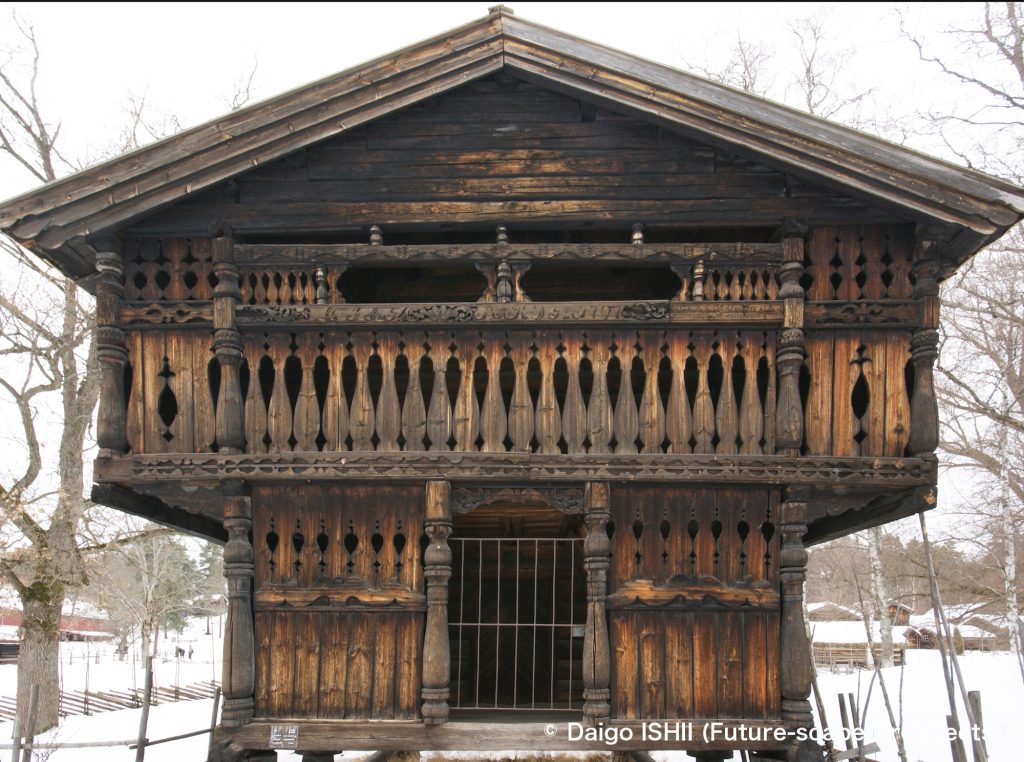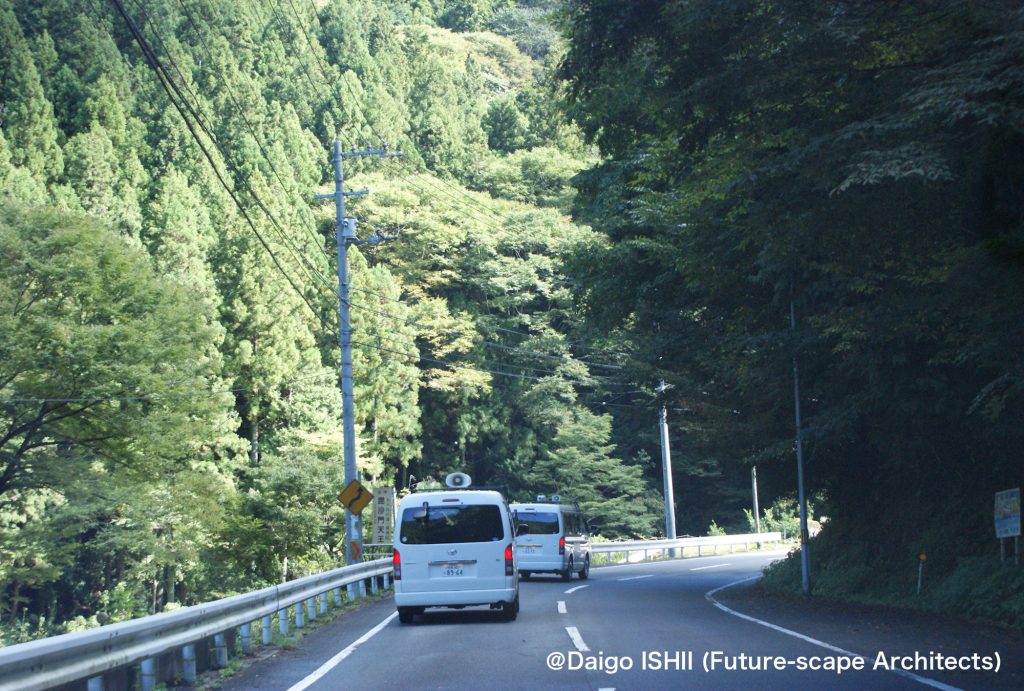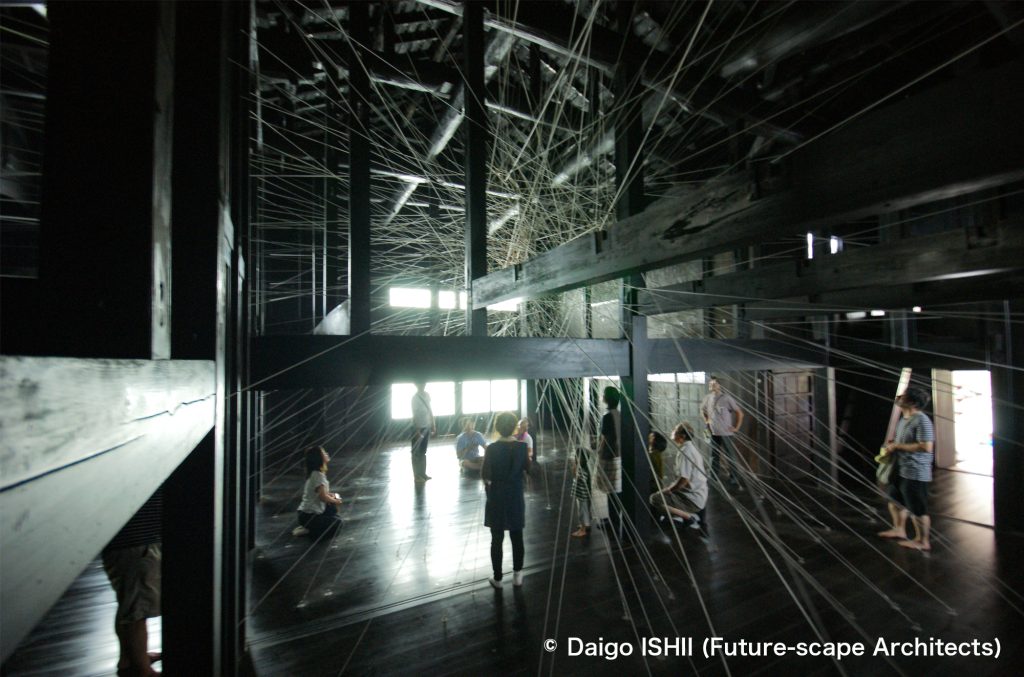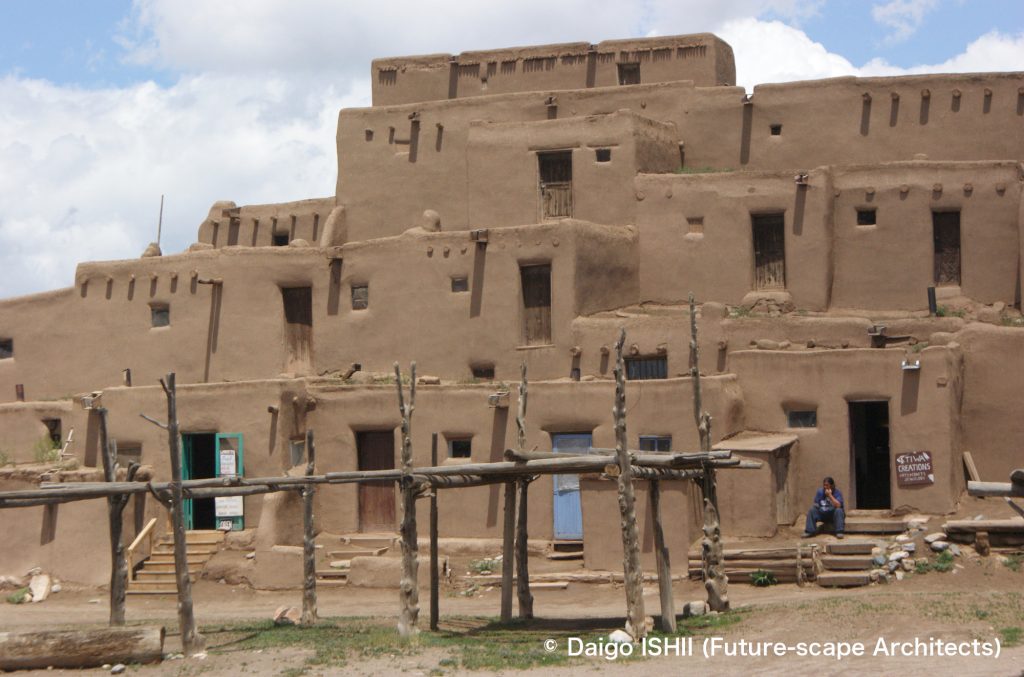弘前のねぷたに来て、夜の本番だけで満足したら、ほんとうにもったいない。
If you are satisfied with only the main event in the night in the Hirosaki Neputa, it is a great pity.

7:00 p.m. - 10:00 p.m. : See the parade of the fan Neputas by Tsuchiko neighborhood association.
弘前ねぷたの担い手の中心は、町内会で、80組強。全組が毎日参加ではないのですが、僕の見た日は63組。驚くほどの数です。
本番は夜7時からですが、ほんとうのスタートは午後2時あたり。出発点の弘前公園を目指して、そこら中の道に、ねぷたが出現します。人力移動の組も多く、至るところで渋滞が発生。車に支配された町に、ねぷたの日だけは、人間的なリズムが戻って来ました。
午後5時、弘前公園の回りは、ねぷたで埋め尽くされます。道にはシートが敷かれ、巡行の打合せをする組もあれば、腹ごしらえの組もあります。仕切り役の男性が子供たちに指示を出しているかと思えば、高校生が、長老に歯切れよく挨拶していたりと、世代を超えた老若男女のコミュニケーションが垣間見えて楽しい。ねぷたの背景が凝縮されて現れたこの時間と空間が、弘前ねぷたの真髄。
午後7時、ねぷたの開始。「ヤーヤードー」の掛け声とともに、順番に出発。扇の形の弘前ねぷたは、優しく幻想的な雰囲気。かつて、青森ねぶたのように大型化しましたが、明治維新の経済の混乱とともに、経費の掛からない扇ねぷたに移行したそうです。
その主役の扇ねぶたに、子供ねぷたや、町名サインねぷたのような小さなねぷたがたくさん付くのが、弘前の楽しさ。赤ん坊を載せた乳母車を連結したねぷたもありました。赤ん坊から成人まで、町内の誰もが参加できる仕組みです。
小さなねぷたは、子供たちが描いたものもありますが、メインの大きな扇ねぷたは、専門の絵師による浮世絵を手本としたもの。ガイドブックには、51人の絵師が紹介されていました。企業が数千万円掛けて製作する青森では、ねぶた師も一つの組ねぶたをつくれば、何とか1年暮らせるが、町内会が担い手の弘前では、一台の扇ねぶたの絵で50万円程度。10組描いて、どうにか食えるとのことで楽ではありませんが、これだけの絵師の存在が、弘前の文化の厚み。組のまとめ役に、絵師に、こんな絵を書いて下さいとかお願いするか尋ねたところ、そんなこと恐ろしくて言えません、とのことでした。
高さのあるねぷたの泣きどころは、電線と信号ですが、弘前はそこが見せ場。ねぷた本体も昇降しますが、頂部に載った男衆が、交差点に掛かると、扇の頂部を倒し、手と棒を総動員して、切り抜けて行きます。もう一つの弘前らしさが、ねぷたの回転。ねぷた上部から長い紐を伸ばして、3.4人の回し手が、走りながら回転させます。円を描いて、ねぷたの回りを走るうちに、遠心力が付き、一瞬、宙を舞う組もありました。
朝、観光案内所に自転車を借りに行くと、ファックスを見る職員が浮かない顔。聞けば、昨晩の集客が落ち込んでいるとのこと。8月1日の初日に37万人だった人出が、青森ねぶたの始まった2日には25万人となり、さらに五所川原の立ちねぶたが加わった4日には、18万人に減ったそうです。電車で1時間も離れていない3都市が、一斉に行うのだから、予想できるとは言え、ほんとうに熾烈。
The secret of the Hirosaki Neputa is that the bearer is a neighborhood association. The associations to join were 82 in 2011. The number is amazing.
The start time of the main event was at 7:00 p.m. In reality, it started around 2:00 p.m. Many floats heading into Hirosaki Park as a starting point appeared on the streets. Many teams pulled their floats by human power. So traffic congestion were generated everywhere. To the town ruled by the car, the human rhythm returned only on the day of the Neputa.
Around 5:00 p.m., floats filled with the surroundings of Hirosaki Park. On the streets, participants laid sheets. Some teams prepared for the parade, and others had a meal before the performance. While the person in charge was giving instructions to children, a high school student crisply greeted a senior. The communication scene between the men and women beyond a generation showed the Hirosaki citizen bonds. This time and space that condensed the background of the Hirosaki Neputa were just the essence of this festival.
At 7:00 p.m., the main event of the Neputa began. Floats started in turn from Hirosaki Park with the calls of “Yah Yah Doh”.
The fan form of the Hirosaki Neputa gives a gentle and profound atmosphere. Once Neputa floats had developed to a large-scaled Neputa like the present Aomori Nebuta. But, due to confusion in the Meiji Restoration in the middle of the 19th century, a large-scale Neputa which needed a large budget had gone down and changed into a fan Neputa.
In addition to the main fan Neputa, small floats like a children float or a neighborhood name sign float were also a pleasure to see. There was even a float that connected baby carriages mounting babies. It was a system that everyone in the neighborhood could join.
The children and participants painted and produced small floats. But, only the main big fan Neputa followed the traditional Ukiyoe painting by an expert painter. The guidebook introduced 51 painters. In Aomori where a company pays 20 million Japanese Yen to production, the painter can live for one year only by manufacturing one set of Nebuta. Meanwhile, in Hirosaki where the bearer is a neighborhood association, the payment for a painter is about 500 thousand Japanese Yen for one set of fan Neputa. A painter needs to draw 10 sets for living. The business is not so easy. But, the number of painters shows the richness of the culture of Hirosaki.
The vulnerable point of tall floats of Hirosaki was passing under an electric wire and a signal. It was also the highlight scene. Not only the floats went up and down but also the menfolk on the top part pushed down the upper part and broke through an electric wire and a signal, using a hand and a stick. Another highlight of Hirosaki was the rotation of the float. About 3 persons rotated the float running, using a long string from the upper part of the float. While running around the float as drawing the circle, the rotator of one team flew in the air for a moment by centrifugal force.
In the morning, I went to tourist information to rent a bicycle. The staff looked depressed reading a just delivered fax. For me, who asked the reason, she explained. On the first day on August 1, 370,000 people visited Hirosaki. On August 2, when the Aomori Nebuta began, 250,000 peoples visited the Hirosaki Neputa, and 200,000 peoples on August 3. On August 4, when the Tachi-Nebuta in Gosyogawara added further, the number of visitors decreased even to 180,000 people. Among three adjacent cities within 1-hour distance by train, the Nebuta festivals were held in the same period. The competition was severe.
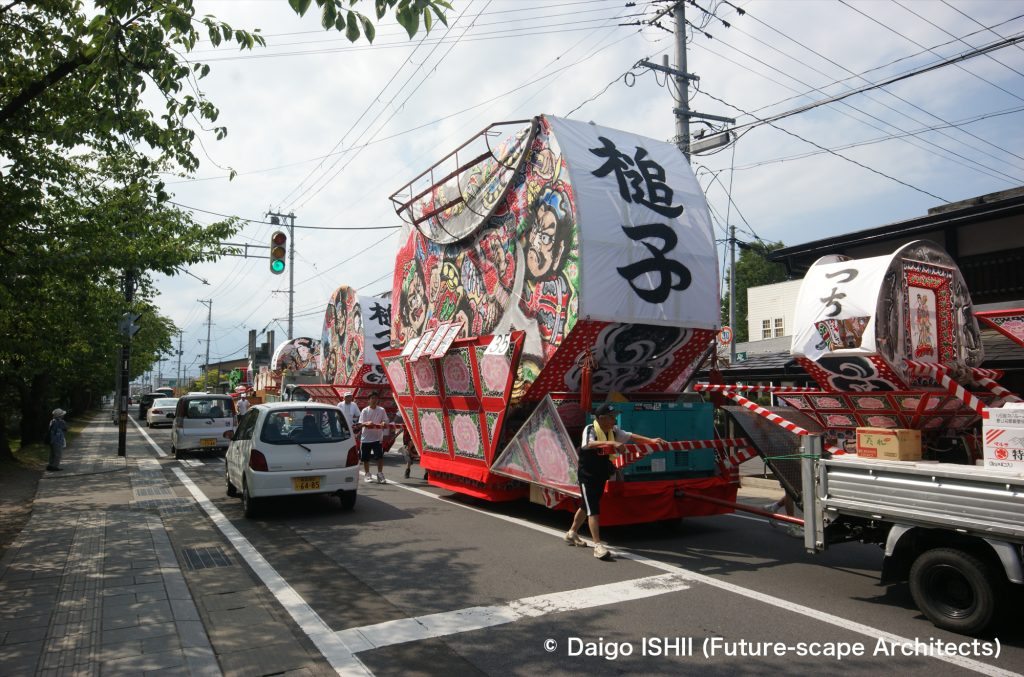
2:00 p.m. : In downtown Hirosaki, traffic jams occured due to the human-powered movement of Neputas.

2:00 p.m. : In downtown Hirosaki, traffic jams occured due to the human-powered movement of Neputas.
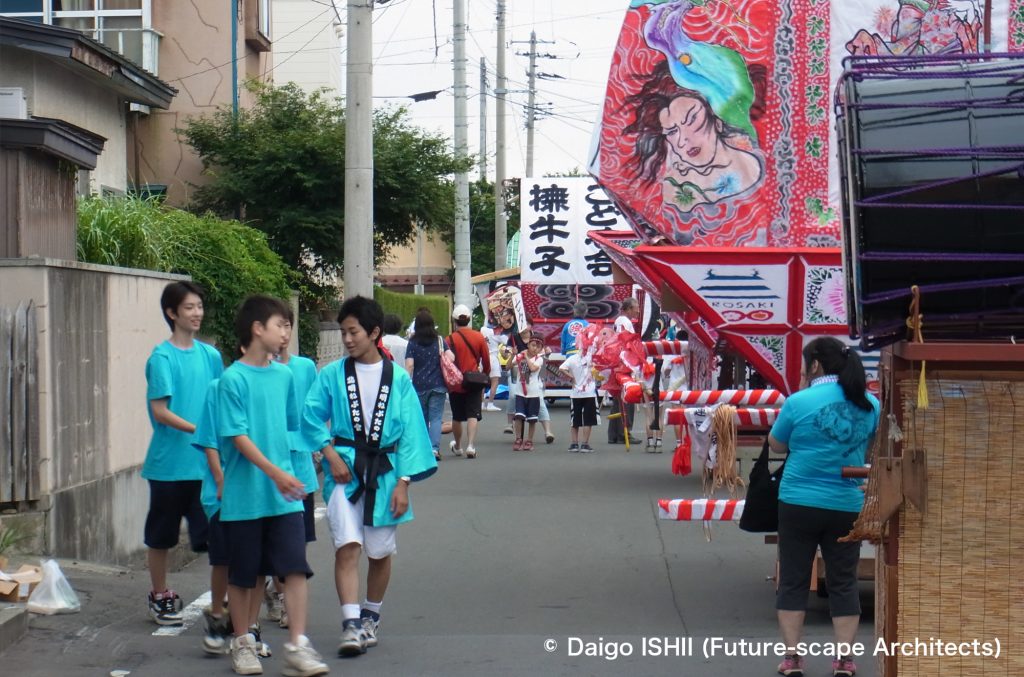
2:00 p.m. - 7:00 p.m. : Participating Neputa floats gathered one after another in the back streets around Hirosaki Park.

2:00 p.m. - 7:00 p.m. : Neputa floats gathered in the back streets around Hirosaki Park were preparing for parade.

2:00 p.m. - 7:00 p.m. : On the main street along Hirosaki Park, a Neputa team had a meal on the sidewalk.
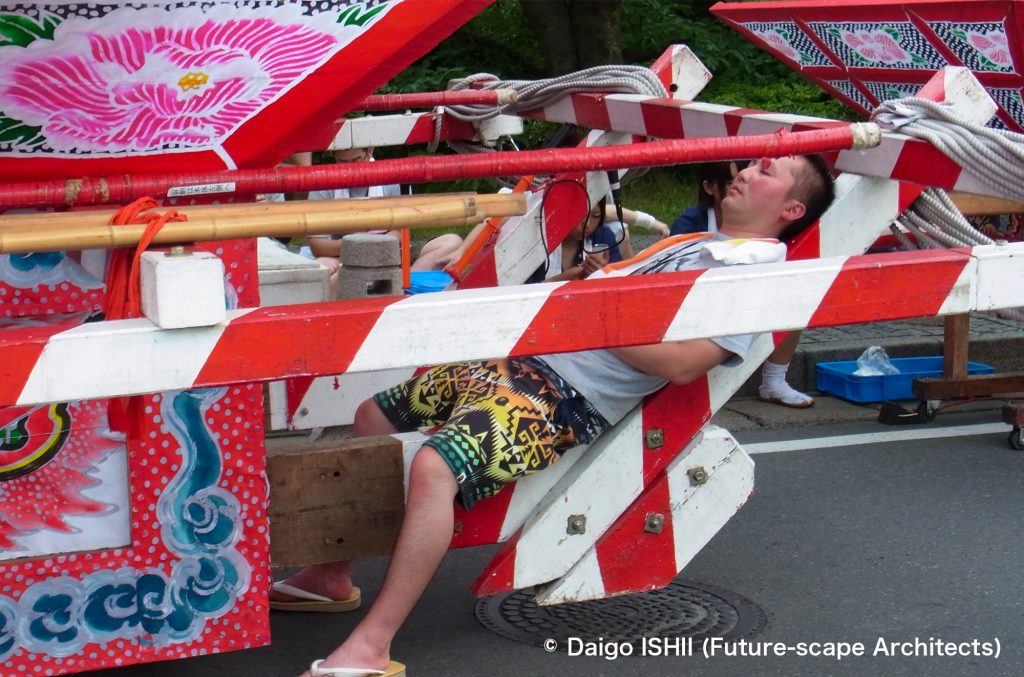
2:00 p.m. - 7:00 p.m. : In the back streets around Hirosaki Park, a participant took a nap on a Nebuta float due to the heat.
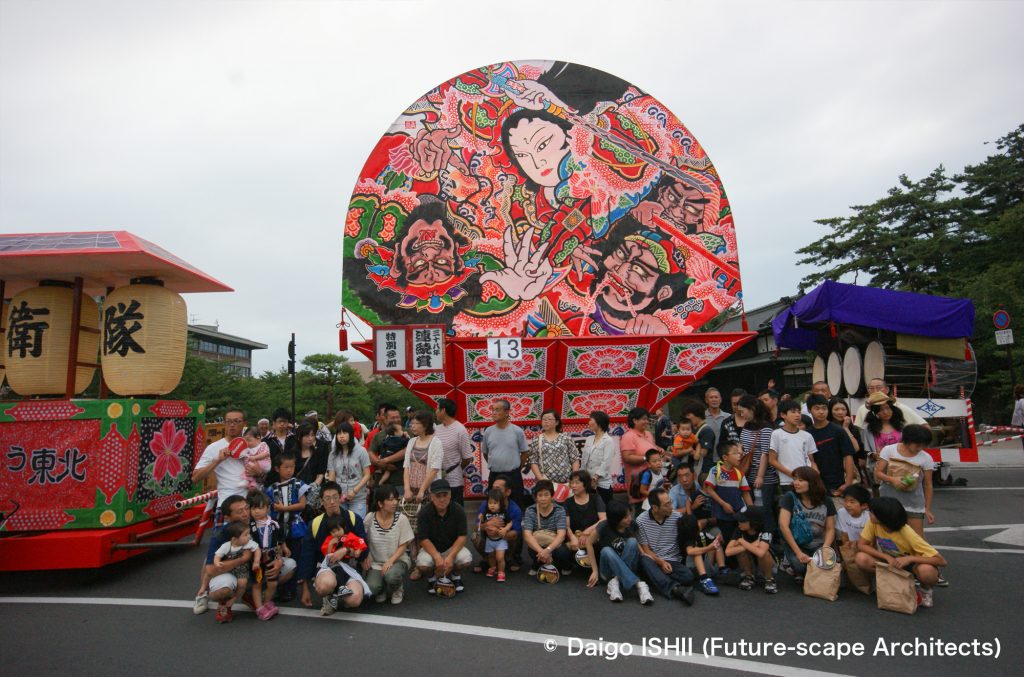
2:00 p.m. - 7:00 p.m. : At the entrance of Hirosaki Park, the participants of a neighborhood association took a commemorative photo in front of the Neputa float.
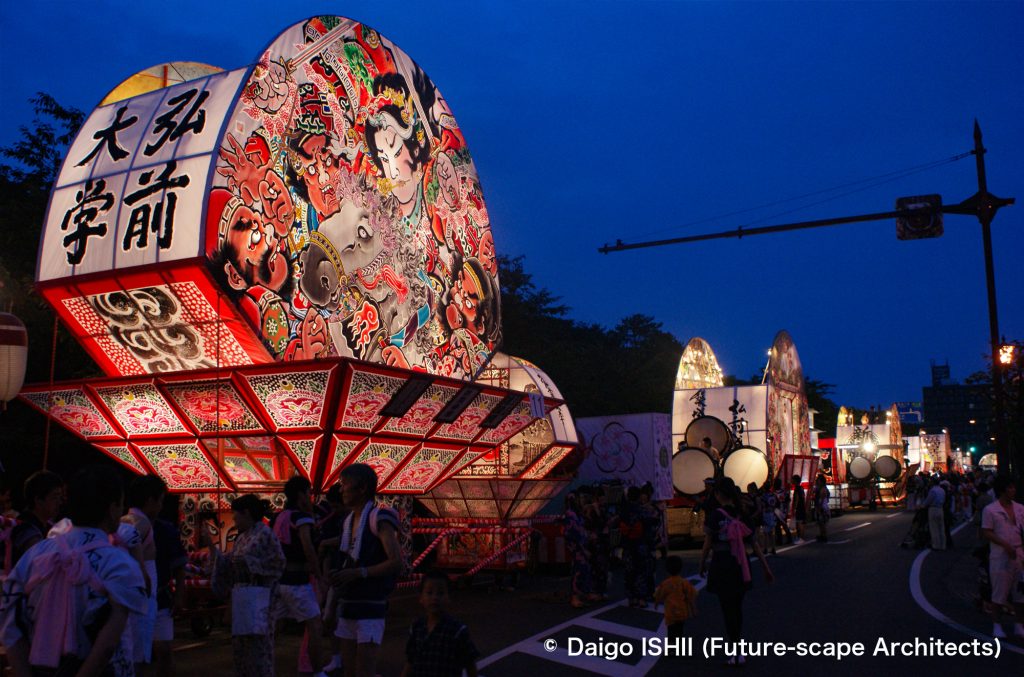
7:00 p.m. : Along Hirosaki Park, Neputa floats formed a line waiting to depart.

7:00 p.m. - 10:00 p.m. : See the parade of the fan Neputa floats.
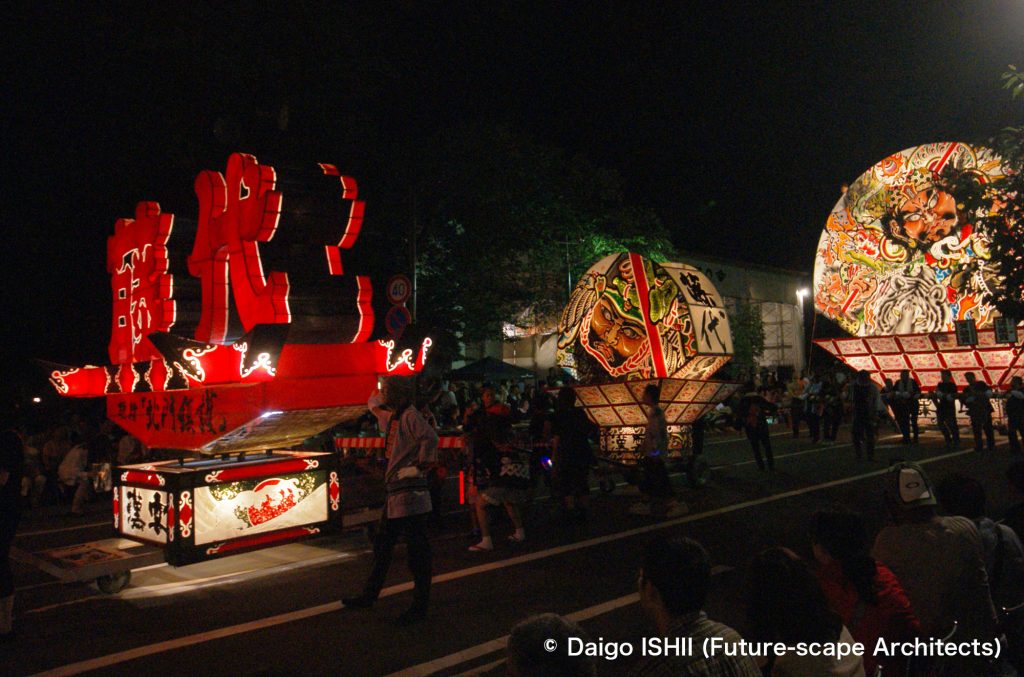
7:00 p.m. - 10:00 p.m. : The Fujishiro neighborhood association's Fan Neputa floats and the letter form float of the neighborhood association name at the head paraded.
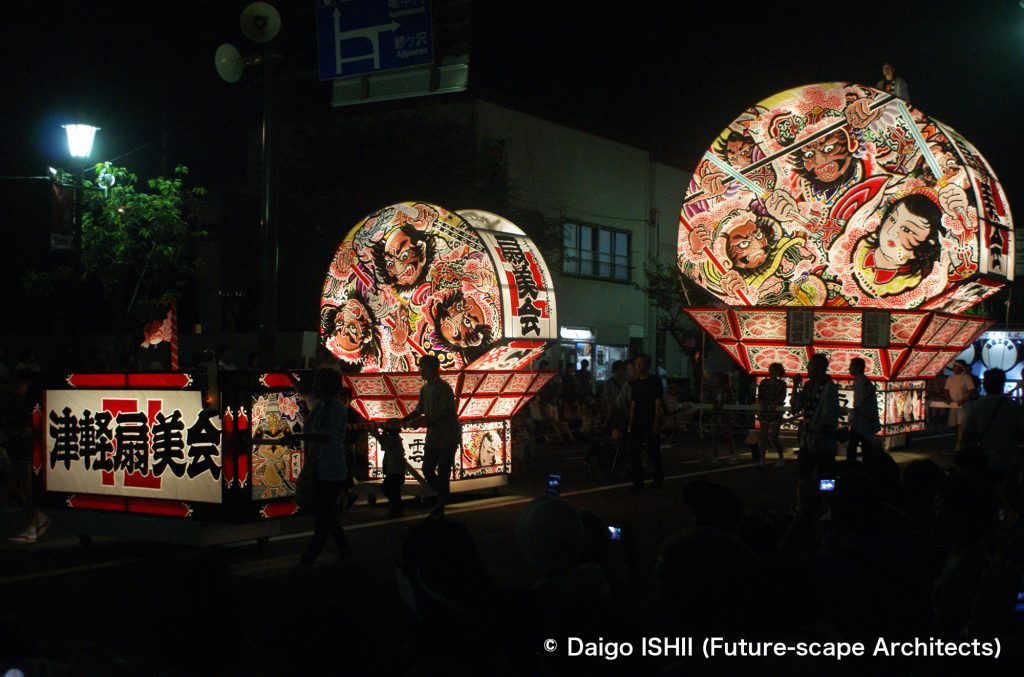
7:00 p.m. - 10:00 p.m. : The Tsugaru Senbi-kai association's Fan Neputa floats paraded.
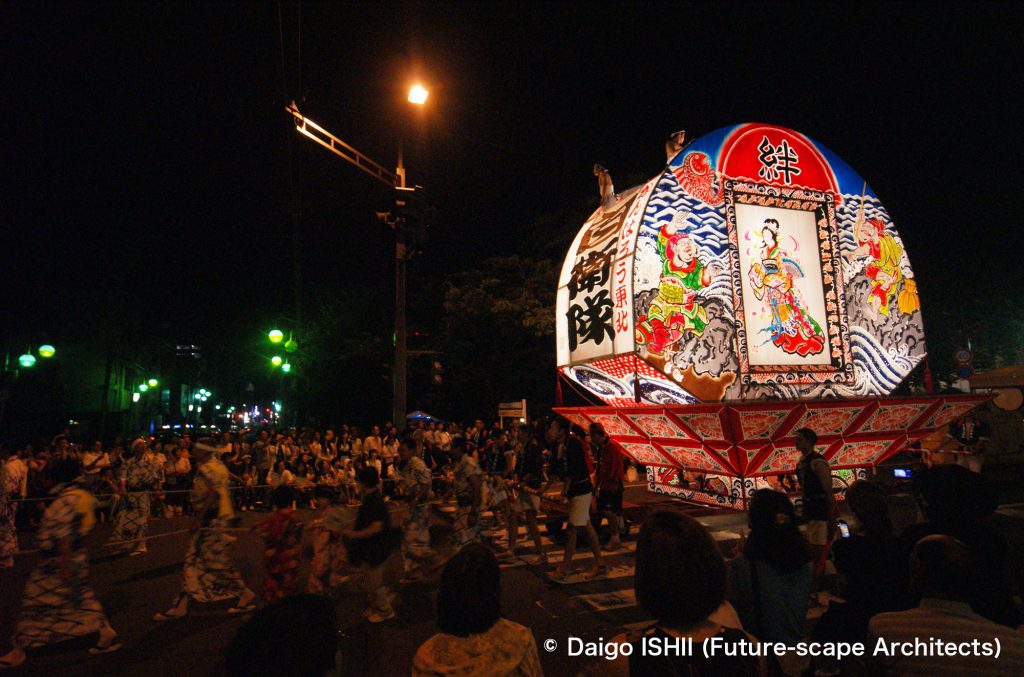
7:00 p.m. - 10:00 p.m. : The Self-Defense Forces' Fan Neputa float paraded.
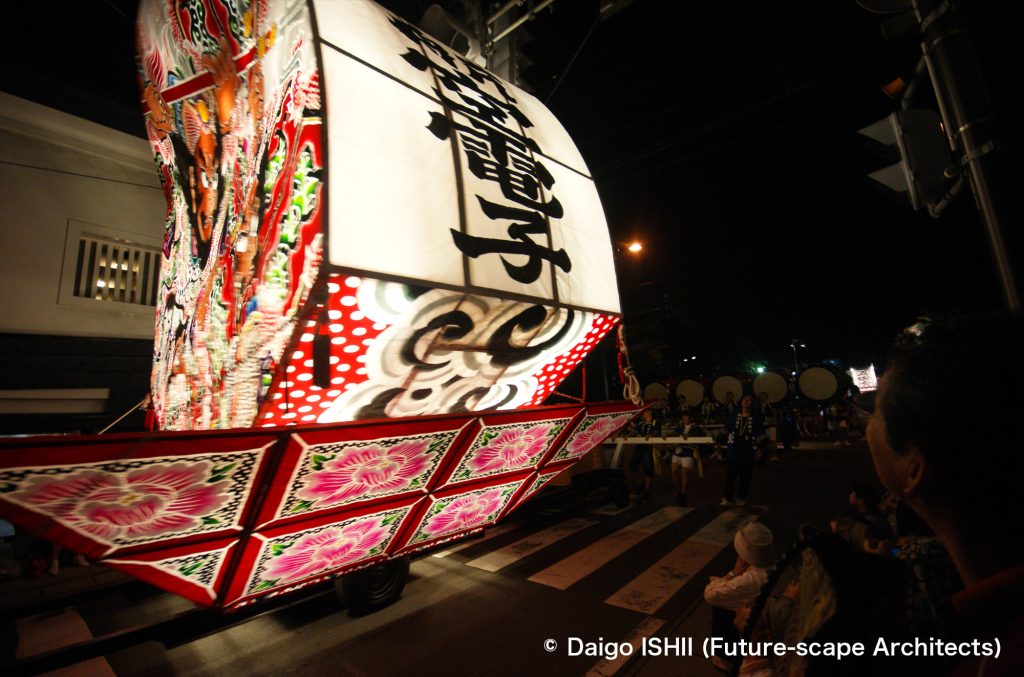
7:00 p.m. - 10:00 p.m. : See the Fan Neputa float going down the slope.

7:00 p.m. - 10:00 p.m. : See the Fan Neputa float parade.

7:00 p.m. - 10:00 p.m. : See the Fan Neputa float parade.

7:00 p.m. - 10:00 p.m. : See the Fan Neputa floats parade.

7:00 p.m. - 10:00 p.m. : See the Neputa like a fusion of the lower part of Hirosaki's Fan Neputa and Aomori Nebuta.

7:00 p.m. - 10:00 p.m. : The members at the top of the fan Neputa dodged electric wires and traffic lights.

7:00 p.m. - 10:00 p.m. : The members at the top of the fan Neputa knocked down part of the Neputa and dodged electric wires and traffic lights.

7:00 p.m. - 10:00 p.m. : In the drum Neputa, women on top and women walking beat the drums.
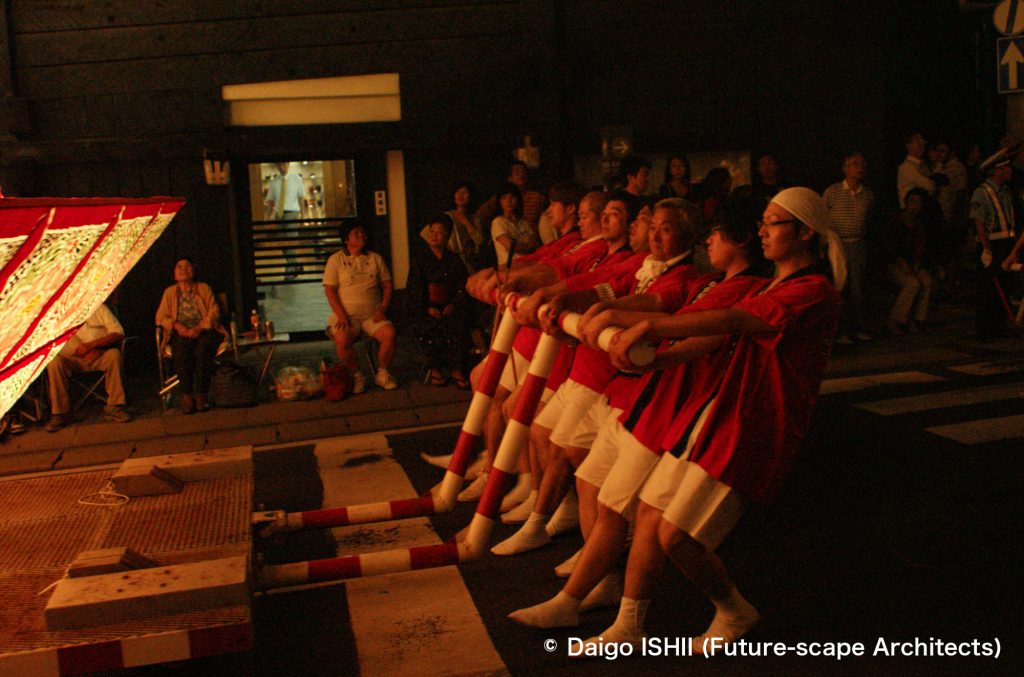
7:00 p.m. - 10:00 p.m. : Since it was a downhill from Hirosaki Park as the starting point to the center of the city, men acted as stoppers behind the fan Neputa to prevent it from running out of control.

10:00 p.m. : After ending the procession, the residents pulled the fan Neputa by long ropes, shouting “Yah Yah Doh” through the dark streets to return to the neighborhood association.
ご感想はこちらへ / Click here for your impressions
もっと詳しく → 青森のお祭り:弘前ねぷた - 1(弘前、青森、日本)
もっと詳しく → 青森のお祭り:弘前ねぷた - 2(弘前、青森、日本)
When you want to know more → Traditional Festivals in Aomori : Hirosaki Neputa - 1
(Hirosaki, Aomori, Japan)
When you want to know more → Traditional Festivals in Aomori : Hirosaki Neputa - 2
(Hirosaki, Aomori, Japan)
参考文献 / reference
"弘前ねぷた速報ガイド2011" (路上社, 2011)
"図説青森県の歴史" (成田稔・長谷川成一, 河出書房新社, 1991)
弘前ねぷた参加団体協議会
Wikipedia
写真の無断使用、転用はご遠慮下さい。/ Please do not use or upload our photos without permission.




